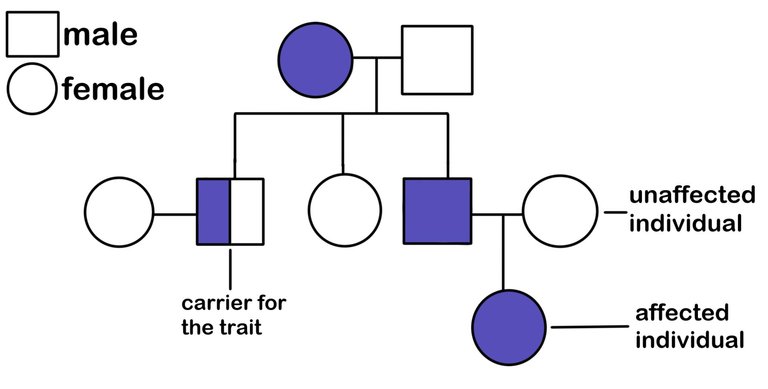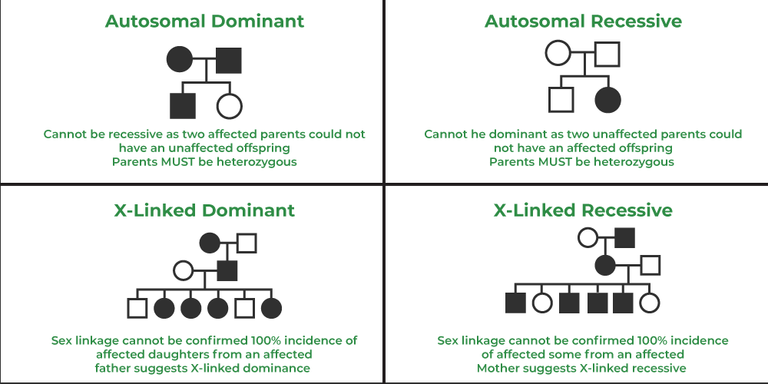Decoding the Complex Landscape of Genetic Disorders
In the intricate mosaic of human existence, genetic disorders stand as unique threads woven into the fabric of our DNA, impacting lives from the very start. At the heart of this complex narrative are Mendelian genetic disorders, stories deeply rooted in the principles of inheritance penned by Gregor Mendel in the 19th century. The work of Gregor Mendel becomes a guiding tune, echoing through family histories and shaping the very essence of our genetic composition.

Made by Canva
A brief overview of Genetic Disorders
Genetic disorders occur when a harmful change to a gene, generally referred to as mutation (also known as a pathogenic variant) affects your genes or when you have the wrong amount of genetic material. Genes are made of DNA (deoxyribonucleic acid), which contain instructions for cell functioning and the characteristics that make you unique.
An individual receive half of his genes from each biological parent and may inherit a gene mutation from one parent or both. Sometimes genes change due to issues within the DNA (mutations). This can raise your risk of having a genetic disorder. Some cause symptoms at birth, while others develop over time.
Genetic disorders can be:
Chromosomal: Chromosomal disorders result from abnormalities in the number or structure of chromosomes. Examples include Down syndrome, caused by an extra copy of chromosome 21, and Turner syndrome, characterized by a missing or partially deleted X chromosome. These disorders often have a significant impact on development and may lead to intellectual and physical challenges.
Complex (multifactorial): Complex disorders arise from a combination of genetic and environmental factors. Conditions like diabetes, heart disease, and certain types of cancer fall into this category. Multiple genes, each with a modest effect, interact with environmental influences, making prediction, prevention, and treatment more challenging compared to single gene disorders.
Single-gene (monogenic): Single gene disorders are caused by mutations in a specific gene and often follow Mendelian inheritance patterns. There are three main types: autosomal dominant (e.g., Huntington's disease), autosomal recessive (e.g., cystic fibrosis), and X-linked (e.g., Duchenne muscular dystrophy). These disorders are often characterized by a direct link between a mutation in a single gene and the manifestation of the associated phenotype.
Pedigree Analysis
Pedigree analysis is a powerful tool used by geneticists to study and trace the inheritance patterns of genetic disorders within families. It involves the construction of a visual representation, known as a pedigree chart or family tree, which depicts the relationships among family members over multiple generations. This analysis helps identify patterns of inheritance, assess the risk of genetic disorders, and understand the underlying genetic factors within a family. Here's a brief description of key elements and steps involved in pedigree analysis:
Symbols in Pedigree Charts:
Pedigree charts use standardized symbols to represent individuals, genders, relationships, and the presence or absence of a particular trait or disorder.
Common symbols include circles for females, squares for males, shaded symbols for individuals with the disorder, and lines connecting parents and offspring.
Types of Pedigree Patterns:
Autosomal Dominant: Affected individuals (shaded symbols) appear in every generation, and affected individuals often have an affected parent.
Autosomal Recessive: Affected individuals may not appear in every generation, and two carriers (unaffected individuals with one copy of the mutated gene) can have an affected child.
X-Linked: The disorder is more prevalent in males, and affected males usually inherit the mutated gene from their carrier mothers.
Mendelian Disorders
Broadly, genetic disorders may be classified into two categories namely Mendelian disorders and Chromosomal disorders. Mendelian disorders are mainly determined by alteration or mutation in the single gene. The pattern of inheritance of such Mendelian disorders can be traced in a family by the pedigree analysis as discussed above. Most common and prevalent Mendelian disorders are Haemophilia, Cystic fibrosis, Sickle-cell anaemia, Colour blindness, Phenylketonuria, Thalassemia etc. It is important to mention here that such Mendelian disorders may be dominant or recessive. By pedigree analysis one can easily understand whether the trait in question is dominant or recessive.
Haemophilia
Haemophilia, a Mendelian disorder, revolves around a disruption in blood clotting factors due to mutations in the F8 or F9 genes. In this disease, a single protein that is a part of the cascade of proteins involved in the clotting of blood is affected. Due to this, in an affected individual a simple cut will result in non-stop bleeding. Prolonged bleeding, easy bruising, and joint pain characterize this X-linked recessive condition. Males, possessing a single X chromosome, are more affected, while females, as carriers, may show milder symptoms. Treatment involves clotting factor replacement therapy, with emerging gene therapy promising transformative possibilities.
Phenylketonuria (PKU)
Phenylketonuria, an autosomal recessive disorder, stems from mutations in the PAH gene, leading to a deficiency of the enzyme phenylalanine hydroxylase. The affected individual lacks an enzyme that converts the amino acid phenylalanine into tyrosine. As a result of this phenylalanine is accumulated and converted into phenylpyruvic acid and other derivatives. Accumulation of these in brain results in mental retardation. This metabolic imbalance results in intellectual disabilities, developmental delays, and seizures. Early detection through newborn screening is crucial. The mainstay of management is a strict dietary regimen limiting phenylalanine intake, allowing affected individuals to navigate the challenges of PKU with resilience.
Colour Blindness
Colour blindness, often X-linked recessive, is a condition influenced by mutations in the OPN1LW and OPN1MW genes. Difficulty in distinguishing between red and green colours characterizes this perceptual diversity. Males are more frequently affected, while females, as carriers, may experience milder symptoms. Although colour blindness may not significantly impact daily life, it introduces a nuanced layer of diversity in human vision, shaped by unique genetic stories.
In a Nutshell
Mendelian genetic disorders unveil themselves not just as scientific phenomena but as shared narratives of understanding and hope. Through personalized healthcare, compassionate decision-making, and ethical considerations, we collectively write a future where the human spirit triumphs over the complexities of our genetic tapestry.


Congratulations @silarai! You have completed the following achievement on the Hive blockchain And have been rewarded with New badge(s)
Your next target is to reach 300 upvotes.
You can view your badges on your board and compare yourself to others in the Ranking
If you no longer want to receive notifications, reply to this comment with the word
STOPCheck out our last posts:
Source of potential text plagiarism
Plagiarism is the copying & pasting of others' work without giving credit to the original author or artist. Plagiarized posts are considered fraud. Fraud is discouraged by the community.
Guide: Why and How People Abuse and Plagiarise
If you believe this comment is in error, please contact us in #appeals in Discord.